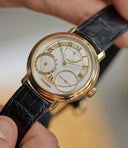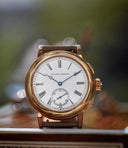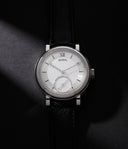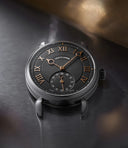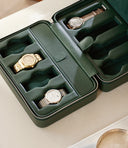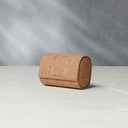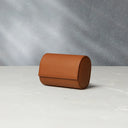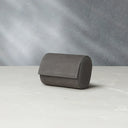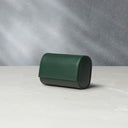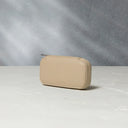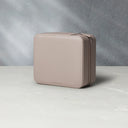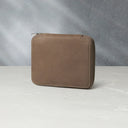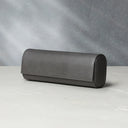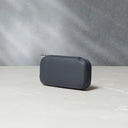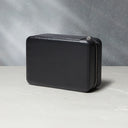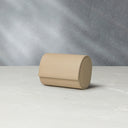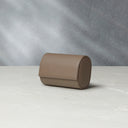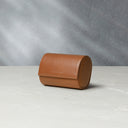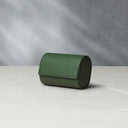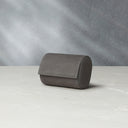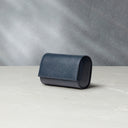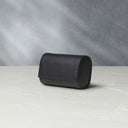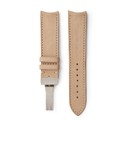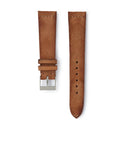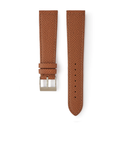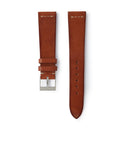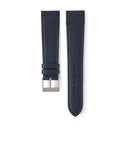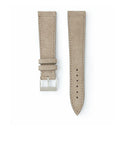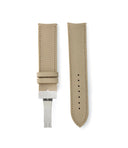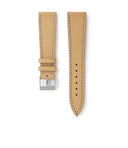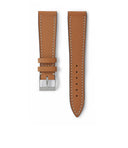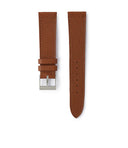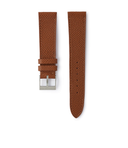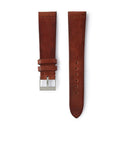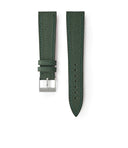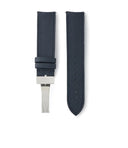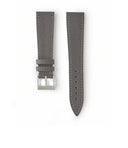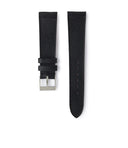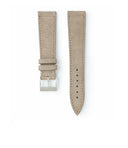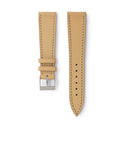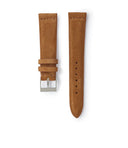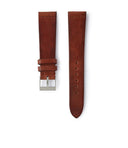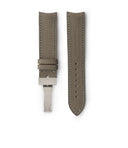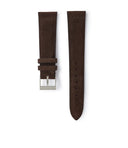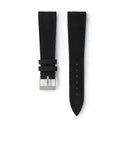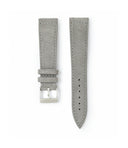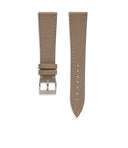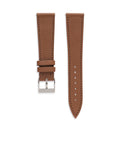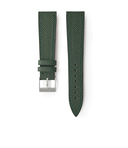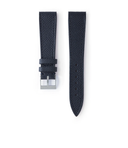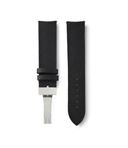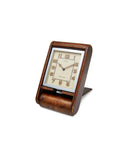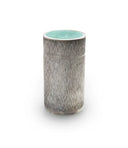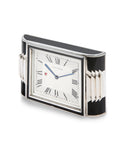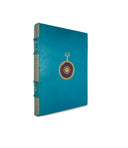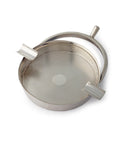

Collectors’ Guide to Urban Jürgensen
Raj Aditya Chaudhuri
In the first part of this Collectors’ Guide to Urban Jürgensen, we focused on the history and the various strands of the family leading up to the brand’s revival earlier this year.
In this second part, we will focus exclusively on the pocket watches that were made under the Urban Jürgensen & Sønner name, when it was guided by Peter Baumberger and Derek Pratt. To consider them in the fullness that these watches deserve, we will look at the technical innovations that Pratt championed, along with the returning market for some of these pieces.
To do so, and to separate reality from lore, we have leaned on the expertise of names such as Dr Helmut Crott, Kari Voutilainen, Luca Soprana, and Alexandre Ghotbi.
The constant innovator
The story of Urban Jürgensen & Sønner is as much one of Pratt’s innovations as it is of Baumberger’s vision. Perhaps no innovation is more crucial to this period than the carriage-mounted remontoire that was Pratt’s original design.
At its simplest, a remontoire is a device that gets energy from the mainspring via the gear train, and stores it in a spring, releasing it at regular intervals. Such a store of energy, closer to the point of contact (that is the escapement) is advantageous and the release of a regular quantum of it is key to linear balance amplitude, and steady timekeeping.
The set up is fairly straightforward with a fixed escapement. However, Pratt was particularly interested in the challenge of delivering an even impulse to a constantly moving tourbillon carriage. He laid out his research and thoughts in an article in the Horological Journal in 1991, also outlining the challenges he was dealing with. While closing the gap between the secondary spring and the escapement offered an improvement, Pratt’s solution sought to do one better.
He was guided as much by the works of Thomas Mudge, John Harrison, and his contemporary Dr George Daniels (particularly his 15-second remontoire located under the one-minute tourbillon carriage in an unfinished watch) as he was by constant force innovations employed in taxi meters and aircraft black boxes. Pratt first began thinking about the idea of a carriage-mounted remontoire in 1981, creating a working iteration by the following year.
With the escapement mounted on to the tourbillon carriage that is constantly on the move, it has to interact with a fixed wheel of the drive train. The locking and unlocking interaction of the escapement requires a deceleration and subsequent acceleration from a stopped position. This, of course, means there is inertia to overcome – 300 times, to be precise, during the course of the revolution of a one-minute tourbillon in a gear train at 18,000 vibrations per hour. This is understandably not a recipe for linear amplitude, which impacts time keeping.
Pratt’s solution was a one-second remontoire mounted concentrically with the escapement within the carriage of a one-minute tourbillon – the carriage advances by one-second increments, each time the remontoire rewinds. The remontoire’s position, between the escapement and the balance, also limits the effects of the inertia of the going train during the rhythmic locking and unlocking of the escapement to the 15-tooth escape wheel.
In Pratt’s setup, the standard 15-tooth lever escapement is paired with a three-toothed secondary escape wheel, which is in fact the remontoire. The two are linked by a coiled spiral impulse spring for transmitting energy. The action of the remontoire escape wheel is coupled to the action of a Reuleaux triangle-shaped cam – which rotates once every five beats of the escape wheel – within a fork. The triangle is named after the engineer and pioneer of kinetics Franz Reuleaux. The form of this polygon is such that the distance between its points is always constant. Pratt knew of the benefits of this polygon form in steam engines of old, but he was most moved by its use in the Wankel engine of his Mazda RX-7.
Luca Soprana, a watchmaker who has channelled Pratt’s technical legacy, thinks he has a handle on the method that guided Pratt’s innovations. He says, “He would get a tool, a machine that did a specific task, and then he would create something with it. Derek got this tool to make oval-shaped pieces on the lathe, and then he made the Oval watch. That was how he thought about stuff. Similarly, in the beginning, the carriage-mounted remontoire tourbillon had cams made from steel. They were performing exactly like the ruby cams that came after. But, of course, the ruby cam was a bigger challenge, so Derek had to try to develop those skills in his workshop.”
The carriage-mounted remontoire became a mainstay of the pocket watches Pratt created for Urban Jürgensen. The idea to include such a remontoire device in a wristwatch was born in about 2008. However, since Pratt passed away the very next year, the project was taken up by American watchmaker Stewart Lesemann, with Soprana (and his Atelier 7h38) becoming involved in 2014. Together they brought the project to fruition. Fittingly, the watch with Pratt's Reuleaux triangle remontoire bears the late watchmaker's name on the dial.
Pocket watches
With that basis, which hopefully offers a window into Pratt’s mind and ability with (micro) mechanics, we will look at the pocket watches he deployed this in for Urban Jürgensen. It should be noted that this represents a sizable portion of Pratt’s total output throughout his career.
As is perhaps to be expected, Peter Baumberger’s intention was to relaunch the Urban Jürgensen & Sønner name with a series of pocket watches. As part of his acquisition of the name, he came into a cache of vintage calibres left over from the 1919 sale of the Jules Jürgensen Copenhagen branch of the family to Charles Heuer (son of Ed Heuer & Co.) and Henry Freund & Bros (a distributor for Jules Jürgensen Copenhagen in New York).
The 90 or so vintage calibres were not all made equally. Crott, the one-time owner of Urban Jürgensen & Sønner, says, “Heuer didn't want to buy the old movements because they said they were too thick. In those days, Art Deco, slim watches were in vogue. So Heuer sold them to the [Jules] Jürgensen brand in Copenhagen. When Peter bought the Copenhagen branch of Urban Jürgensen, he had these movements in there and he had this unique chance with Derek, who likes pocket watches and who was able to finish them to the highest quality. So, there were several reasons to do this. They gave the watches a very subtle modern touch.
"Peter had this understanding from historical watches, and he wanted to create these in the way it was done 100 years ago.”
- Dr Helmut Crott
“They were an assortment of partly blank movements, as well as movements the brand had bought from other specialist companies at the time. There was a difference in quality between them. The nice, true Jürgensen calibres numbered between 30 and 40. The most interesting of the 3,000 series of pocket watches were based on these movements. While there were around 70 watches in the 3,000 series, these – the tourbillons, perpetual minute repeaters with chronographs – were made in much smaller numbers.”
The 3,000 series of pocket watches can be found with serial numbers going up to 3,068. The first “series” of pocket watches, unified by the period in which they were made rather more so than anything else, came in the 1980s. The second “series” came in the early 1990s.
It is believed that Pratt and Baumberger created the first pocket watch in order to get around the initial insistence of then owner Gerhard Scheufens that Urban Jürgensen & Sønner stay in Danish hands. The watch was a 22 ligne one-minute tourbillon with twin barrels and a fan-style reserve indicator. Baumberger presented this as an example of his intention for the resurrected brand.
For the sake of simplicity, in this instalment we will divide the pocket watches produced in the Baumberger-Pratt era into two distinct sets, although all belong to the 3000 serial number series. First, we will discuss the tourbillon pocket watches that form the core of the brand’s modern offering, followed by the complicated watches based on vintage ébauche calibres.
Baumberger, who had a preference for the classical, created a modern interpretation of the historical pocket watches that bore the Jürgensen brand names in the late 19th century, says Crott. “This was not modern in the way of Patek Philippe pocket watches from 1980, which often had snapback cases. Peter had this understanding from historical watches, and he wanted to create these in the way it was done 100 years ago,” he added.
Mechanical variations


An example of an Urban Jürgensen & Sønner twin-barrel, one-minute tourbillon with carriage-mounted remontoire, dead-beat seconds, and power reserve indication. Notably, this platinum cased No. 3068 is an example of a double-barrel setup with a more traditional large three-quarter plate. It is paired with a silver dial with a restrained, classical grained finish and blued Breguet hands. It is one of two examples from the series with a platinum case.
Of the twin-barrel tourbillon watches, examples were created with three-quarter plates as well as skeletonised barrel bridges. The movements were based on Lemania ébauche calibres on to which Pratt added his signature innovation – the tourbillon carriage-mounted Reuleaux triangle remontoire. A vanishingly small number of these watches were created with a simple lever escapement. Consequently, the rarity of these lever escapement pieces makes them just as interesting to collectors as the mechanically more refined carriage-mounted remontoire pocket watches.
While pocket watch number 19001 featured a carriage-mounted remontoire, numbers 19002 and 19003 did not. Even within the 3000 series there remains such differences. For instance, case number 3060 features a remontoire while at least one other known example from this series features a lever escapement. Beyond these specifics, and the ones we have photographed for this guide, there is little concrete information on how many of the tourbillon pocket watches featured Reuleaux cam remontoires.




Beyond differences of case metals, dial finishes, and treatment of hands (and minor differences in manual movement decoration) the watches are the same in their complication – they feature Breguet-style hours and minutes hands plying a chemin de fer minute track and a chapter of Roman hours. At 6 o’clock is a recessed subsidiary seconds register while across from it; at 12 lies a fan-style power-reserve indicator.
The case is thoroughly classical. It is a commanding 62mm across with a concave bezel. The dial and movement are sandwiched in crystals, the latter visible thanks to the hinged caseback. The serial number, precious metal and brand hallmarks are reserved for the inside of the hinged caseback.
In terms of the movement, they are understood to be variations of the one Pratt had been working on since the mid-1970s. In fact, as we noted earlier, Baumberger used an early prototype of these tourbillon pocket watches to convince the previous owners of the Copenhagen branch of Urban Jürgensen to allow him to put the name on the dials of his watches.
Movement aesthetics
In addition to differences such as watches with and without carriage-mounted remontoires, the key distinction in these watches is between movements with three-quarter plates and those with skeletonised barrel bridges. According to Crott, just three examples were created with the skeletonised finish. This more delicate execution is marked by bridges that wear a darker, frosted finishing. While in No. 3055 the barrel wheels wear a matching dark-frosted finish, the watch No. 1 has special gold engravings. They detail the serial number, case material (rose gold), the skeletonisation of the barrel bridges, and the carriage-mounted remontoire.


Urban Jürgensen & Sønner No. 3055 finished in 1987. Cased in yellow gold, it features the calibre, crafted from silver and coated in nickel. It has the skeletonised variant of the twin-barrel architecture, paired with the one-minute tourbillon with carriage-mounted remontoire that gives it its dead-beat trait. The dial is of the more ornate variety found in this series of pocket watches – it features clous de Paris as well as basket-weave guilloché in the subsidiary seconds, and fan-style power-reserve indicator registers. The gold Breguet-style hours and minutes hands are finely decorated with a rounded finish.


In examples with a large three-quarter plate, the two ends of the rounded, bar-style balance bridge are secured by trapezoid bases. The top end of these follow the form of the three-quarter bridge, with edges finely bevelled and polished. All bridges and plates feature beautiful Côtes de Genève. It should be noted, as can be expected of striping done by hand, there are subtle variations in the patterns of guilloché even if there is little difference in the quality of craftsmanship. The plates are signed with the Urban Jürgensen & Sønner Copenhagen mark, engraved by hand.
Examples include No. 19002– with a yellow-gold case and a grained silver dial with heat-blued Breguet hands – while No. 3068 (pictured below) was cased in platinum. Watch No. 3059, completed in 1985, features a yellow-gold case and a grained white dial and blued hands.
Of the tourbillon pocket watches, the three with skeletonised bridges are perhaps the most individual expression of Pratt’s watchmaking. They are special for a number of reasons. Finished in 1987 (in yellow gold), 1990 (rose gold) and 1992 (in platinum), these watches were originally destined to be a set of five created for a single collector based in Asia. The plan was to create three in yellow gold and one each in rose gold and platinum. The process of development and creation reportedly took 4,300 hours of labour. However, as things often happen, the deal fell through after the collector grew cold on the idea after seeing the first watch.


The watches with skeletonised barrel bridges do with a suitably pared back balance bridge – anchored by standalone pillar bases, the bar bridge is longer and slimmer while still retaining its rounded quality. The five pillars of the skeletonised barrel bridges, one of which also anchors the crown wheel, are adorned with Pratt’s name, the year the piece was finished, and his credo – “Invenit et fecit”. This is a point of distinction, since these skeletonised bridge examples are three of only four Urban Jürgensen & Sønner watches that bear the watchmaker’s name. The fourth, of course, is the Oval, a watch we will discuss further on in this guide.
The skeletonised bridges are finished in a dark, frosted style that gives them a matte finish. It requires a greater skill than a finish such as black polishing.
Pratt’s sense of pride and ownership in these watches is obvious – this skeletonised aesthetic also made its way to the Double Wheel Remontoire Tourbillon pocket watch Pratt created for the Prix Abraham-Louis Breguet competition in 1997. This watch, which was created independently of Pratt’s work for Urban Jürgensen, also bore his name on the dial and as such is one of the only watches to do so. This piece is a subject for another day.
The baseplate on these skeletonised bridge variants is frosted in the tradition of English watchmaking. On it is engraved the Urban Jürgensen & Sønner Copenhagen mark.
It is also worth noting that the last of this trio to be finished – in 1992 – was in fact the very first watch made in the Baumberger-Pratt era. It was first created between 1978 and 1982 and its provenance is also reflected in the watch being numbered 1. It is then safe to assume that this was indeed the proof of concept of the skeletonised twin-barrel architecture as well as the tourbillon carriage-mounted Reuleaux triangle remontoire. It is cased in pink gold. Both No. 1 and No. 3055 feature stainless-steel remontoire cams. No. 1 was offered for sale by Christie’s in 2008.
Another detail of note is the actual material of the Reuleaux cam in the remontoire in these watches. While initial examples feature a stainless-steel cam inside the fork, Pratt was reportedly never satisfied with this architecture. As a machinist, he viewed the dry steel-on-steel interaction between the cam and the fork with reluctance. Pratt procured a lathe that could help him create these delicate ruby cams and consequently the tourbillon watches produced later featured these.
Soprana says, “In the beginning tourbillons had steel cams. They were performing exactly like the ruby cams. But of course, the ruby cam was a bigger challenge, so Derek had to try to develop the skill in the workshop.”
Vintage and complicated


Watch No. 3024
As we have noted in the first instalment of this collectors’ guide, when Baumberger finally managed to convince Scheufens to allow him to first create watches under the Urban Jürgensen & Sønner name, and then to sell the brand to him, he inherited a batch of about 70 vintage ébauche calibres as part of the deal.
Pratt added complications to these already complicated calibres from makers such as Louis-Elysée Piguet. These became the basis of the complicated watches produced in the 3000 series.
One of the earliest of these examples includes a slim, yellow-gold-cased perpetual calendar pocket watch produced in 1978: No. 3002. While the dial bears many of the hallmarks of the Pratt-Baumberger years – four-register layout, Breguet-style hands and beautiful engine turning – it does not wear the brand mark. This etching is reserved for the movement. Watch No. 3001 was made in the same series and has an identical layout.
Urban Jürgensen & Sønner No. 3024, seen here and below, features a perpetual calendar that was added to the minute repeater ébauche from Louis-Elysée Piguet. This particular piece, finished in 1983, with a 59mm officer-style case and hinged caseback, is understood to be one of a series of four pieces. Worth noting are the finger-style bridges anchoring the wheels of the going train and the fine, even striping across bridges and plates. Another example of this configuration is No. 3021, finished in 1982 with an ébauche from 1894.
Watch No. 3014, created in the mid-1980s, has an officer-style yellow-gold case, measuring 60.5mm across. The dial, orientated so the crown and hinged cover are at 3 and 9 o’clock respectively, wears a four-register layout for the calendar and chronograph complications. The moonphase and running seconds are consolidated in the register at 6 o’clock, while the one at 12 is home to both the months display and the 30-minute chronograph counter. The case has two rounded pushers at 12 and 2 for the split-seconds chronograph. The time display hands are Breguet-style and in gold, while the calendar indicators are heat-blued. One of the centrally mounted split-seconds chronographs is in gold while the other is heat blued. Both feature fleur-de-lis-style counterweights. The dial is adorned with two different patterns of guilloché. The movement, of Louis-Elysée Piguet provenance, has the perpetual calendar and split-seconds chronograph complications added modularly by Pratt.
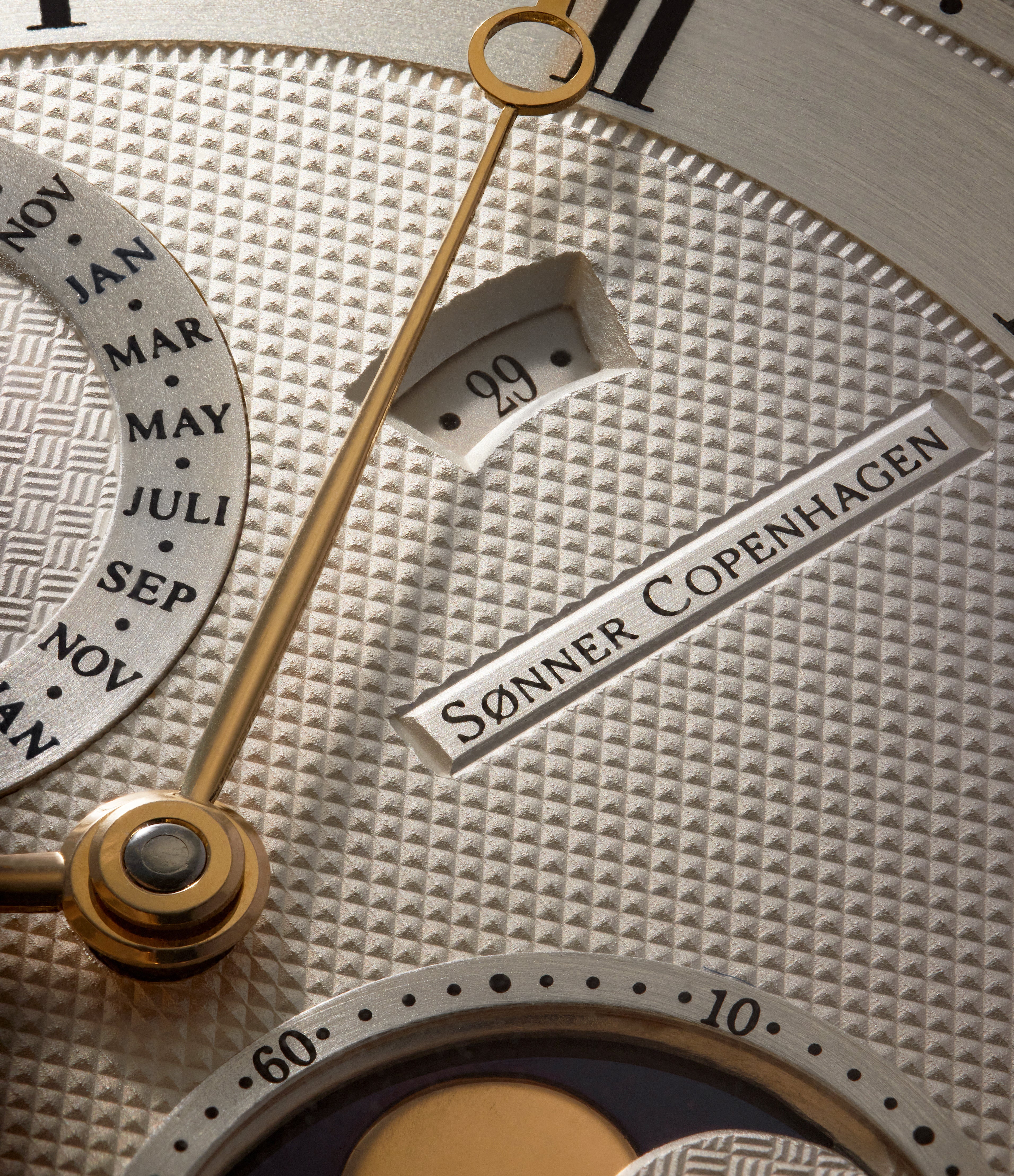

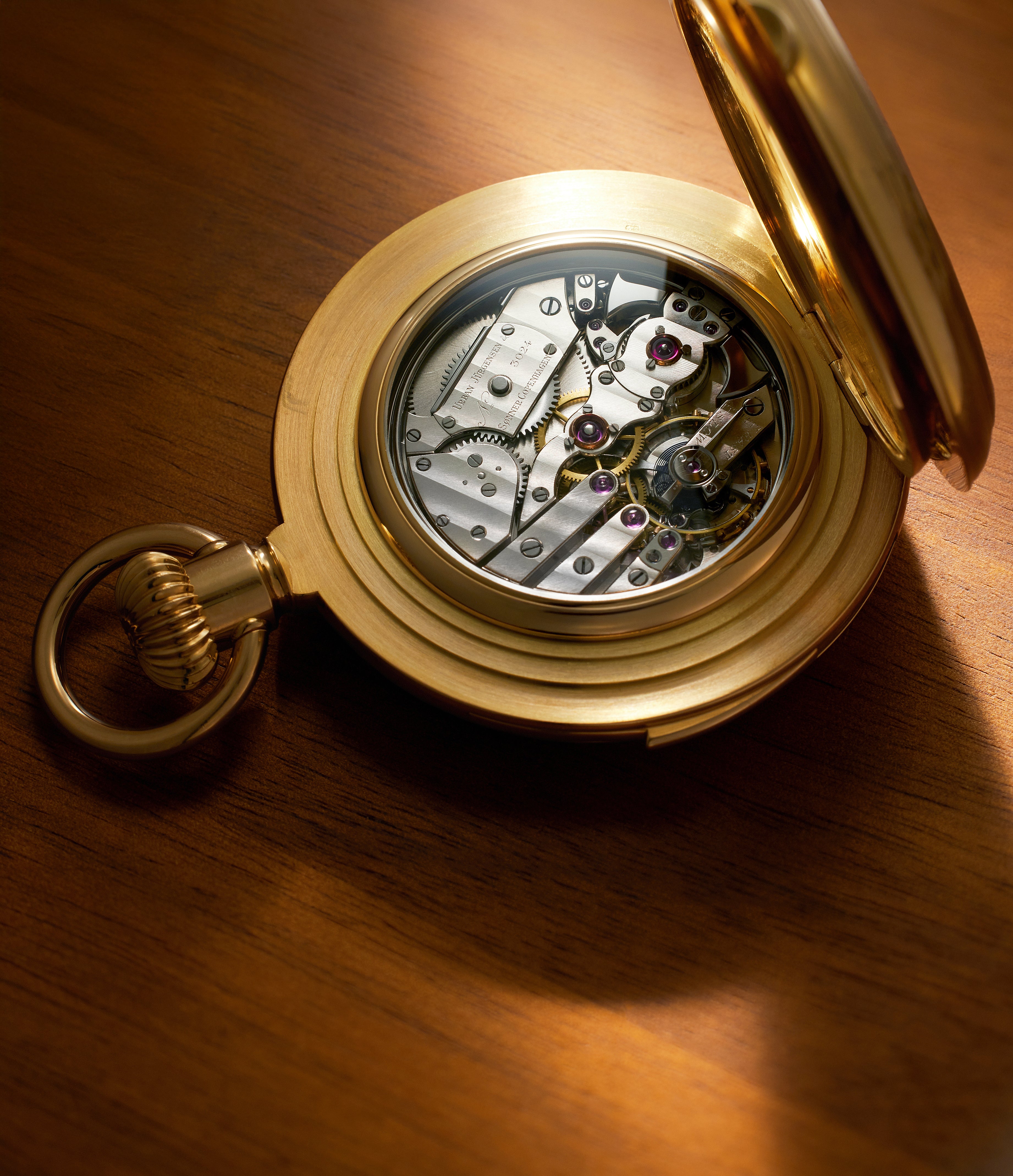

Similarly in pocket watch No. 3013 – finished in the early 1990s – Pratt added a perpetual calendar module and chronograph to a minute-repeater ébauche. It is cased in 60mm of yellow gold, with an open dial side. While the seconds indication is consolidated in the register at 6 o’clock that also houses the moonphase, the register at 12 displays both the months and elapsed seconds with hands mounted co-axially.
A still more complicated piece, similar in configuration but with a larger 62mm case and the addition of a split-seconds chronograph, was produced in 1982. With case No. 3016, the movement bears the number 15131 and Jules Jürgensen’s mark. The movement, again of Louis-Elysée Piguet provenance, dates from the early 1890s and came as a minute-repeater ébauche. Pratt and Baumberger added the split-seconds chronograph, perpetual calendar and moonphase complications to it. Notably, the calendar functions switch instantaneously at midnight and the elapsed minutes counter is integrated into the moonphase display at 12 o’clock (like in No. 3013). The 62mm-wide heavy, yellow-gold, officer-style case is paired with an engine-turned dial typical of the Baumberger-Pratt era. It is perhaps one of the few examples that wears the Jules Jürgensen mark on the movement and the Urban Jürgensen name on the dial.
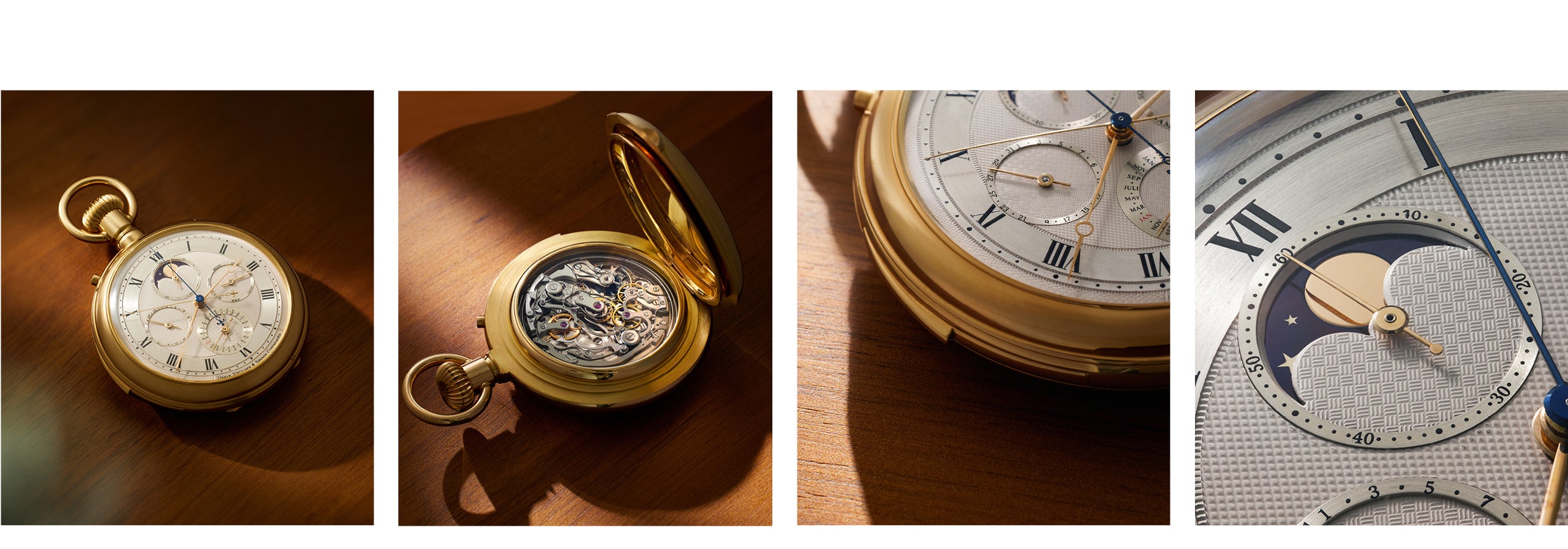
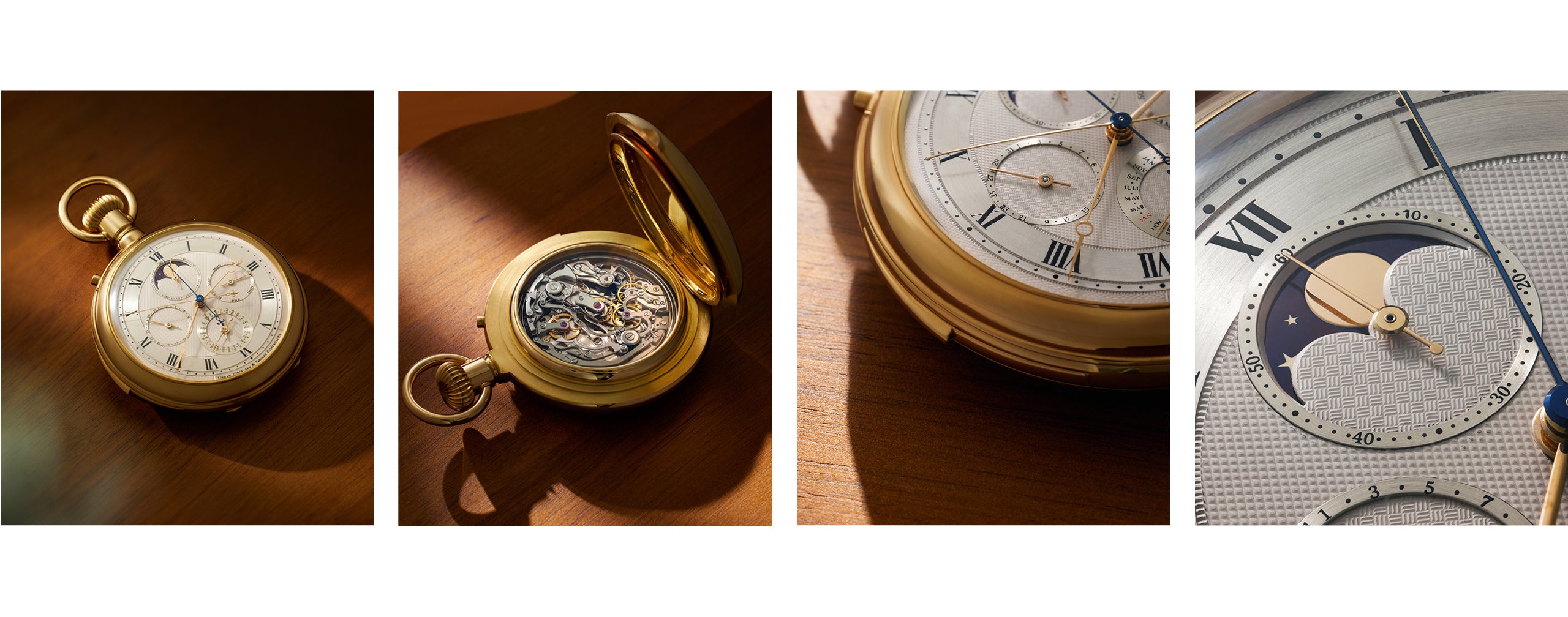
Watch No. 3010 features a 60.5mm open-style yellow-gold case. Inside, it houses a Louis-Elysée Piguet minute-repeater calibre, on to which Pratt added split-seconds chronograph, perpetual calendar, and moonphase complications in a modular fashion. Traditional and ornate, the dial wears engine-turning of three patterns. It has a two-register layout with the month complication and 30-minute chronograph register consolidated in the one at 12 while the register at 6 is home to both the running seconds and the moonphase. Two windows, with the day and the date, flank the register in the northern half of the dial. The hands are Breguet-style. The watch, dating from 1985, was offered for auction by Sotheby’s a few years ago.
Then there are the more elusive pieces, and a possibly unfinished watch. No. 3065, one of the last-known serial numbers in the series, is a split-seconds perpetual calendar example with an unusual dial that Crott has heard about but which has never surfaced on the market. No. 3029, similarly complicated, was reportedly finished in 1994, and exists on paperwork from Baumberger, says Crott. Yet he is sceptical if it ever had a case made for it.
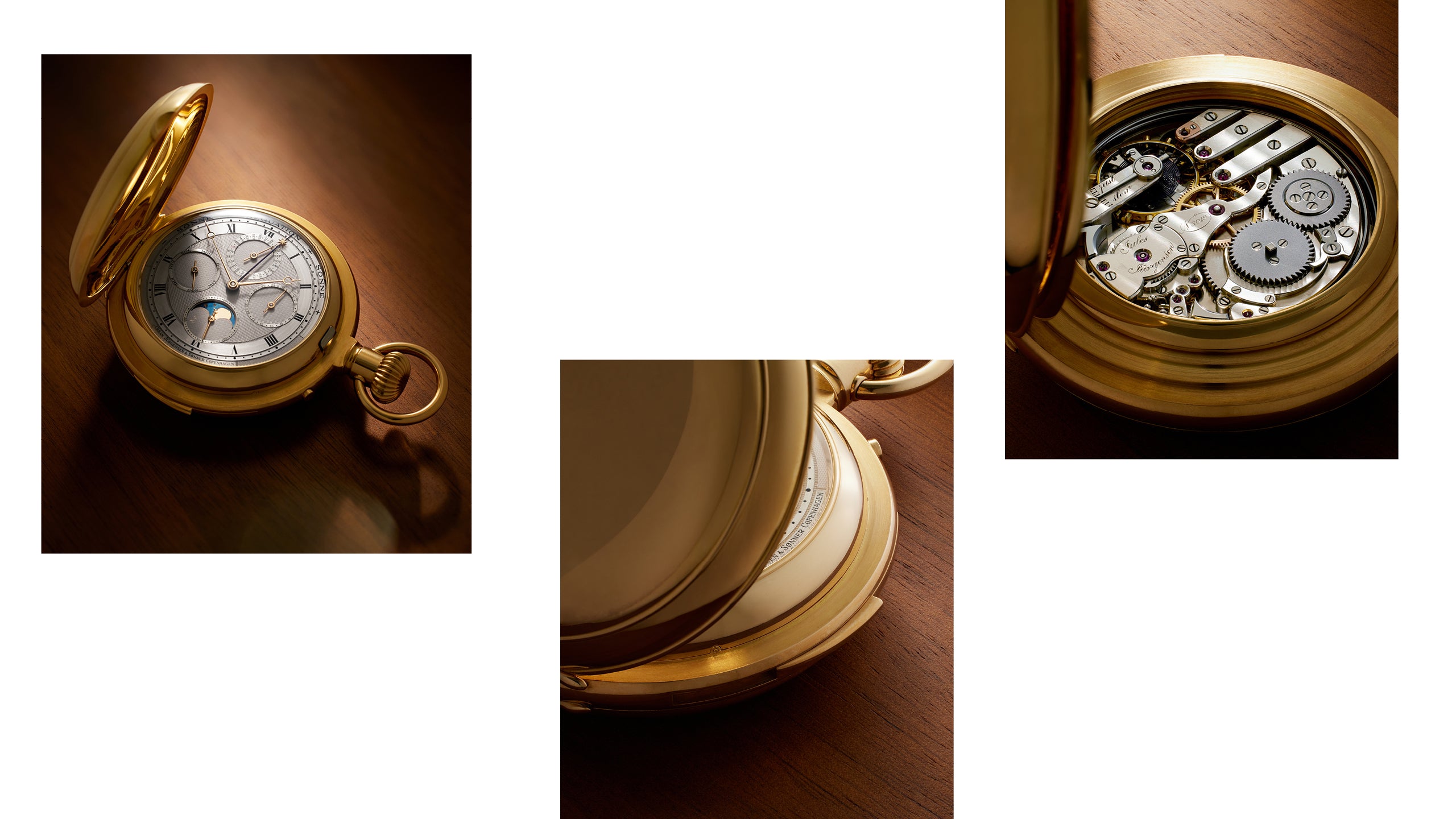

In Context
Baumberger was bullish about these watches, sure in his conviction that there remained a market for these elevated pieces. He believed them superior to what more established houses were offering at the time, and priced them accordingly.
Crott says, “He thought the market was more prepared for these. I have the price list from the late 1990s – Peter offered these watches between CHF 700,000-1 million, which was shocking at the time. The perpetual calendars Urban Jürgensen & Sønner created were almost double the price of examples from Patek Philippe in this era. It was ballsy for a new brand. To his credit, Peter was good at explaining to clients why the watches cost more.”
In fact, pocket watches with tourbillons were listed at CHF 1,128,000 (gold cases) with platinum-cased ones offered at CHF 1,188,000. Officer-style, gold-cased watches were offered at CHF 1,152,000 while open-dial-layout cases were listed for CHF 912,000.
How many of these were completed and sold at the time remains a mystery.
The Oval
This brings us to the best-known Urban Jürgensen & Sønner pocket watch of this era. Of everything Pratt created over the years, none inspires as much awe and conversation as the Oval. Competing narratives have emerged about the story of its creation. Leaning on Pratt’s first-hand account, noted in the April issue of the Horological Journal, a month before he displayed the functional watch at the Basel fair, is perhaps the surest way to get to the bottom of the story. Speaking to Voutilainen, another key person in the story of the Oval, completes the picture.
Preceding the creation of most of the double- and single-barrel tourbillon pieces for Urban Jürgensen & Sønner, Pratt started working on the Oval in 1980, presenting it in some state of completion at Baselworld in 1993. He wrote about the piece in the Horological Journal that same year, detailing the inspiration he drew from 17th-century creations by watchmakers such as David Ramsay, Robert Grinkin, David Bouquet, and Edmund Bull. However, none moved Pratt as much as the Breguet No. 1682/4761. Interestingly, this Breguet was the personal property of the pianist Arthur Rubinstein.


Pratt started on the watch independently, albeit at a difficult time in his life. By 1983, he was in financial strain. Soprana, who remains close with Pratt’s family, says, “Jenny, Derek’s [second] wife, told me that he was in the middle of creating this watch when he gave it to Jürgensen in exchange for CHF 40,000 that he needed since he was in the middle of divorce proceedings. He wanted it to be his own watch. The idea was that Peter would keep it for him and when he got the money [together], he would complete the watch.”
The original silver oval case – 57mm across and 72mm long – with a domed sapphire crystal was elemental to Pratt’s vision for the piece. In fact, the watchmaker noted in his piece in the Horological Journal the considerable lengths he had to go to first try to source it, and eventually giving up on the idea and fabricating it himself. He procured an oven and from there the learning curve was steep. The case was created using an oval turning head fitted to a Schaublin 102 lathe, made to the method described by Dr George Daniels in Watchmaking, according to Pratt’s notes.
It features a one-minute flying tourbillon, anchored and visible only on the movement side, with a spring detent escapement and a one-second remontoire within the cage. The other key element of the movement architecture is the flying mainspring barrel. The wheel train flows linearly from it, giving the movement a clean appearance.
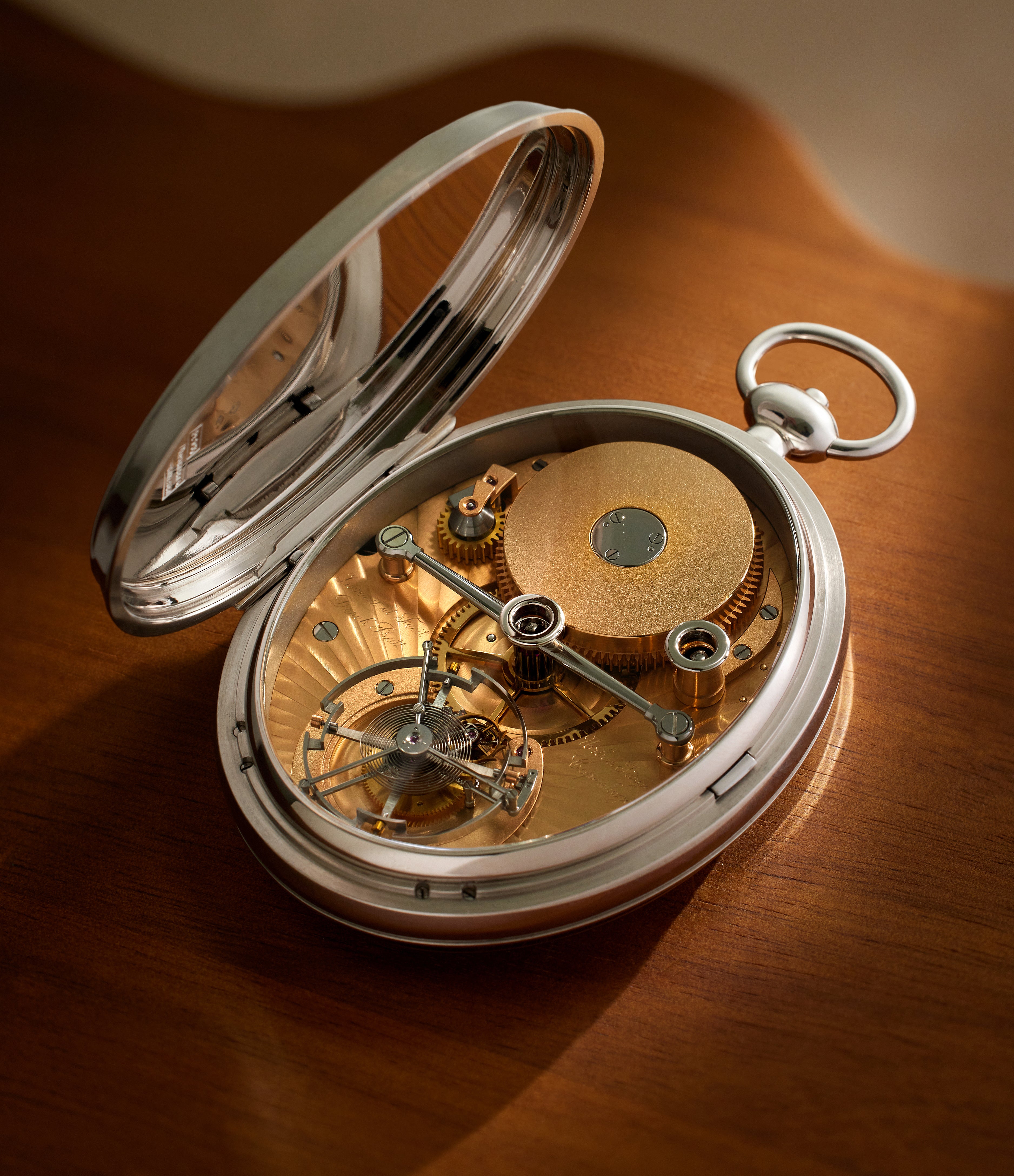

The wearer can intervene in two ways on the movement side – two holes drilled into the crystal are for winding and setting the hands by means of a key. The latter function is done directly through the key in the centre-wheel bar bridge.
On the dial side, at 12 o’clock is the moonphase display followed by a power-reserve indicator (40 hours) and a Réaumur scale for the thermometer display, the latter two mirroring each other’s form.
The watchmaker designed an elegant and likely unique set of mechanics for the moonphase – linked to the hour wheel is an eccentric cam inside a U-shaped fork, much like the one used around the Reuleaux triangle cam inside the tourbillon carriage. The fork is linked to a pall lever, and geared so that the arrangement would translate the motion of the hour wheel into two steps on the serrated edge of the moonphase wheel.
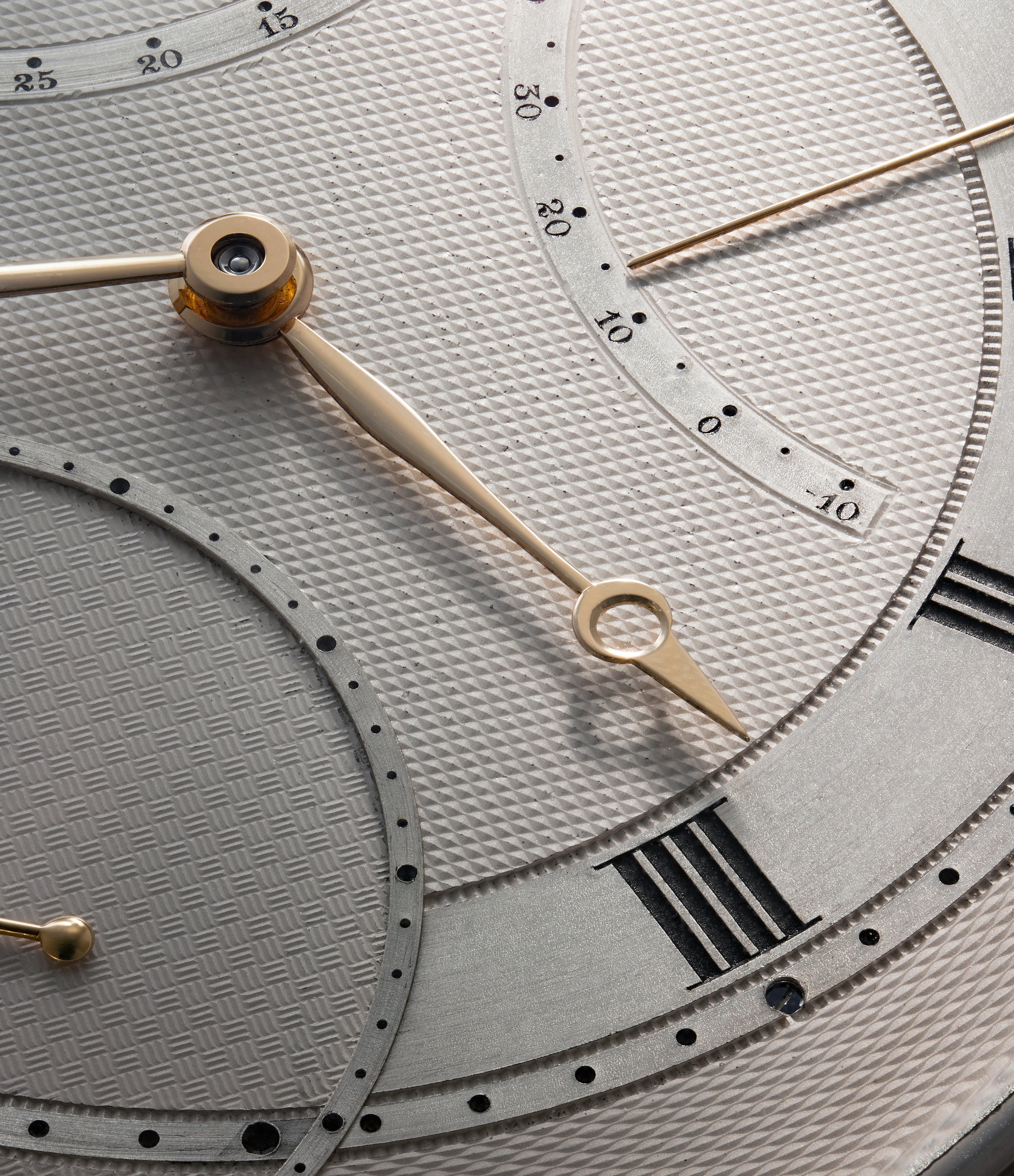

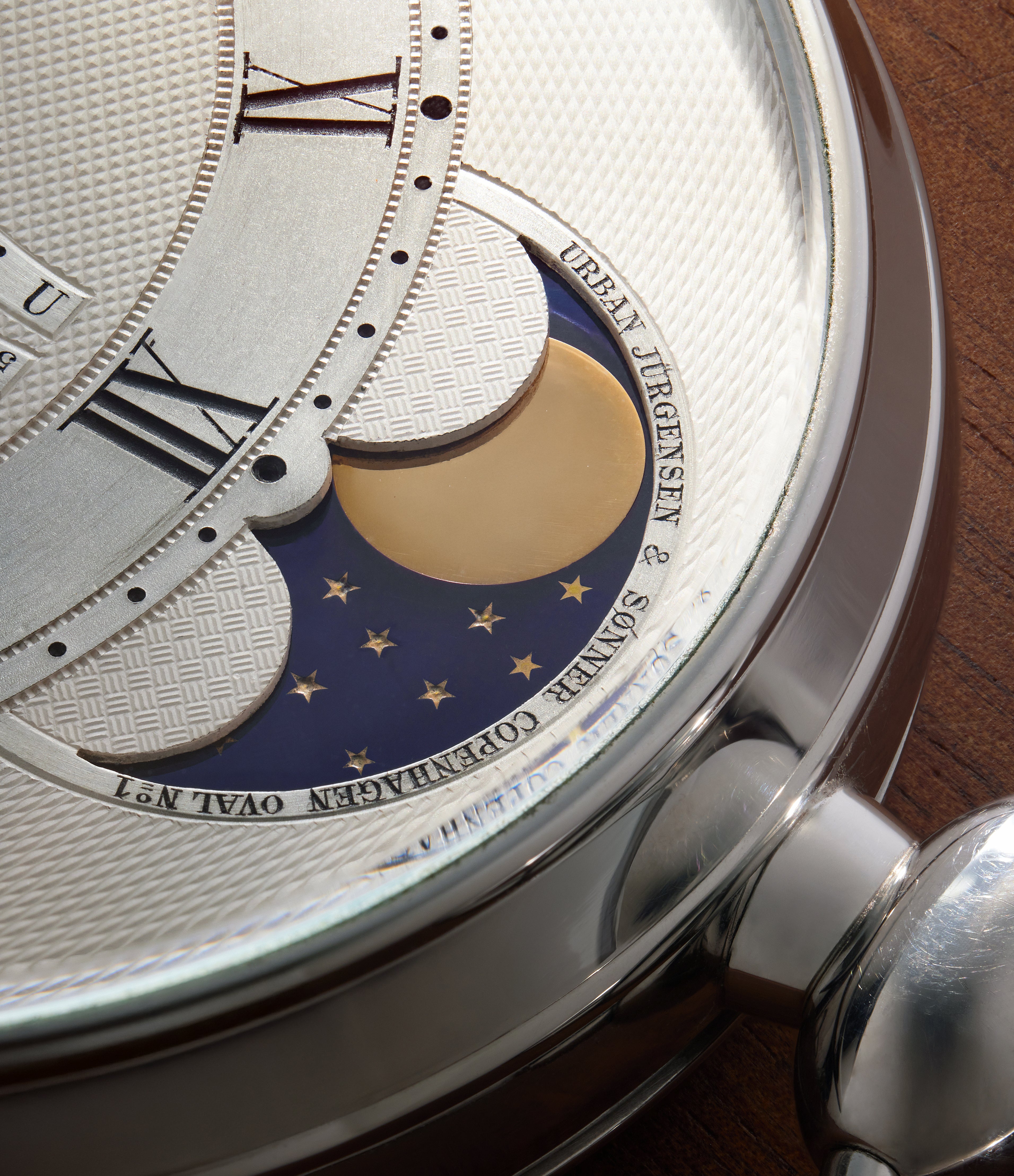

The moonphase features cutouts for the two solid-gold moons, as well as apertures for the stars. The moons are pressed onto the heat-hued steel disk, while the stars are etched and filled with gold. Every step is done manually.
The time display is conventional and restrained, clearly inspired by Breguet. As with much of the fabrication of the case, crystal and movement, the dial was engine-turned from a solid piece of silver by Pratt using manual tools only. It features a central portion adorned with clous de Paris while the subsidiary seconds register has a basket-weave pattern. The peripheral section wears a barleycorn pattern of guilloché.
However, on the movement side things were less finished. There was no striping or anglage visible and no engraving, either. The tourbillon carriage, too, while it featured bevelled edges, appears to have been unfinished at the time.
Pratt never really stopped working on the Oval, which might explain this. It is believed that in about 2004, with his blessing, Baumberger entrusted the watch to Voutilainen. Pratt’s declining health – he had been diagnosed with prostate cancer – meant that Voutilainen was tasked with finishing the piece.
As it is today, the watch is equal parts the work of both Pratt and Voutilainen. The latter says, “I got this watch in 2006; it was in an ébauche state, in a way – the parts were all there, but they were not finished to work together, if I may say so. They were not decorated, not the steel parts nor the main bridges. They were rough after machining, but they were all there. So of course, the first thing is to make it work.” There began a project that would take two years to finish.
Voutilainen counts the Oval as one of the most significant challenges during his time working with Urban Jürgensen under Baumberger’s direction. It was a challenge to finesse the detent escapement and create the hollow raised floating barrel for the mainspring. The micromechanics of the carriage-mounted remontoire also added to the challenge and to the timeline to finish the piece, says Voutilainen. “The detent [for instance] is a delicate escapement and today we don’t have that much experience on those escapements … it's not been my daily work. So that was a challenge. Then it has a power-reserve indication with the conical mechanism and also the thermometer, which looks simple but requires testing to ensure it’s functioning right. So there were a lot of small things, which take time,” he explains.
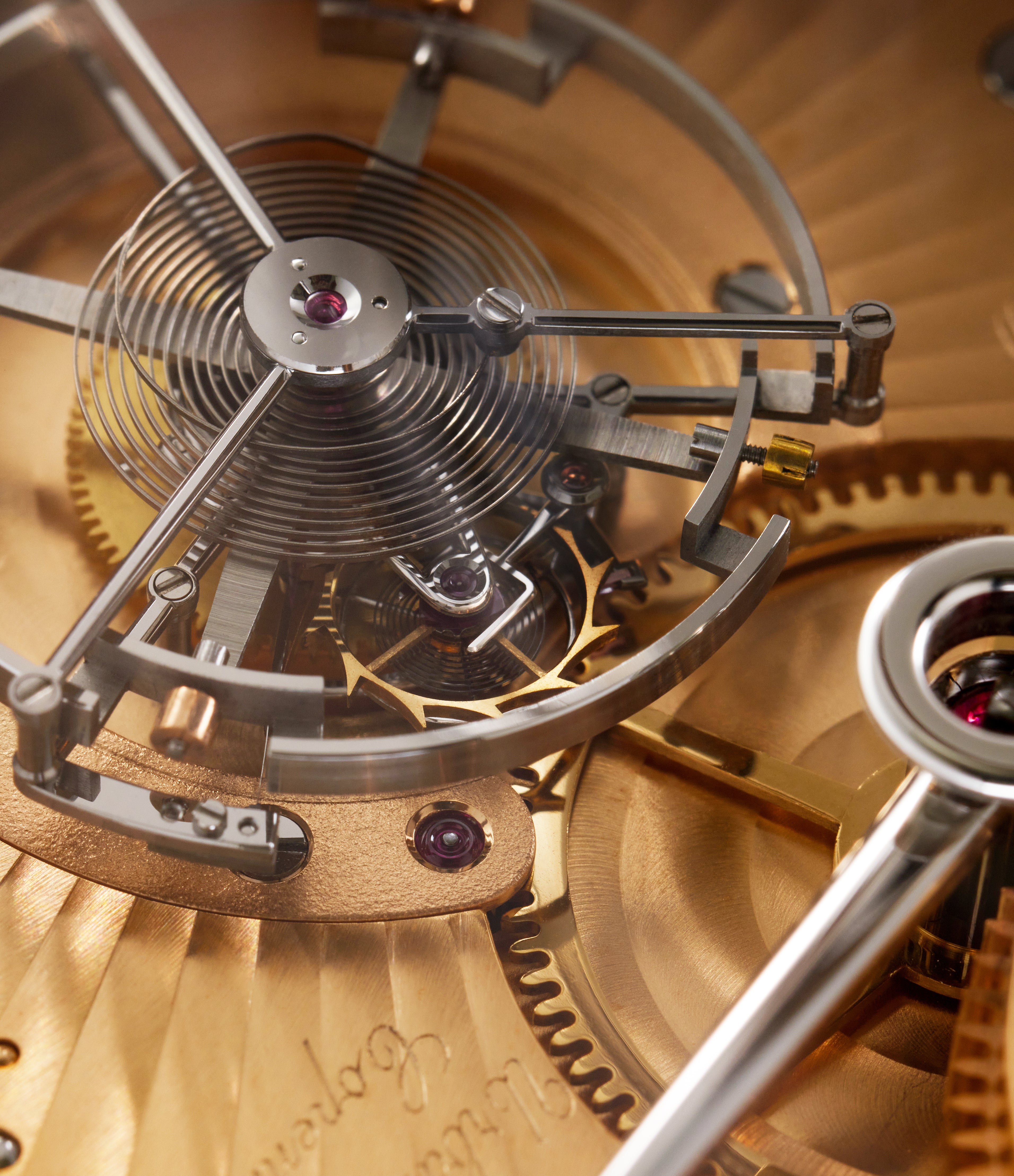

Under the hinged caseback, the movement is visible under the crystal. Each case – crafted from platinum and rose gold – comes with its own set of crystals with the two apertures for the winding and setting keys lined with the corresponding precious metal. The sumptuous and eye-catching finishing of the Oval is the result of an iterative process – while originally the part wore a more functional finish, Baumberger was intent on a style he thought commensurate with the watch’s importance. Executed by Voutilainen, it is a piece with provenance unlike any other in modern watchmaking.
All parts of the movement were disassembled and finished so they interacted well together. They were then finished beautifully. Based on consultation with Baumberger, it was re-cased in platinum, with an additional rose-gold case. The cases, made by the specialist Bruno Affolter (now Les Artisans Boîtiers), were marginally larger, measuring 62mm across and 72mm long.
The shape – another detail that is rarely seen in modern watchmaking – was a challenge both in terms of casemaking and fabricating the crystals, says Voutilainen. It further highlights the completeness of Pratt’s skill as a watchmaker that he was able to do all of this by himself.
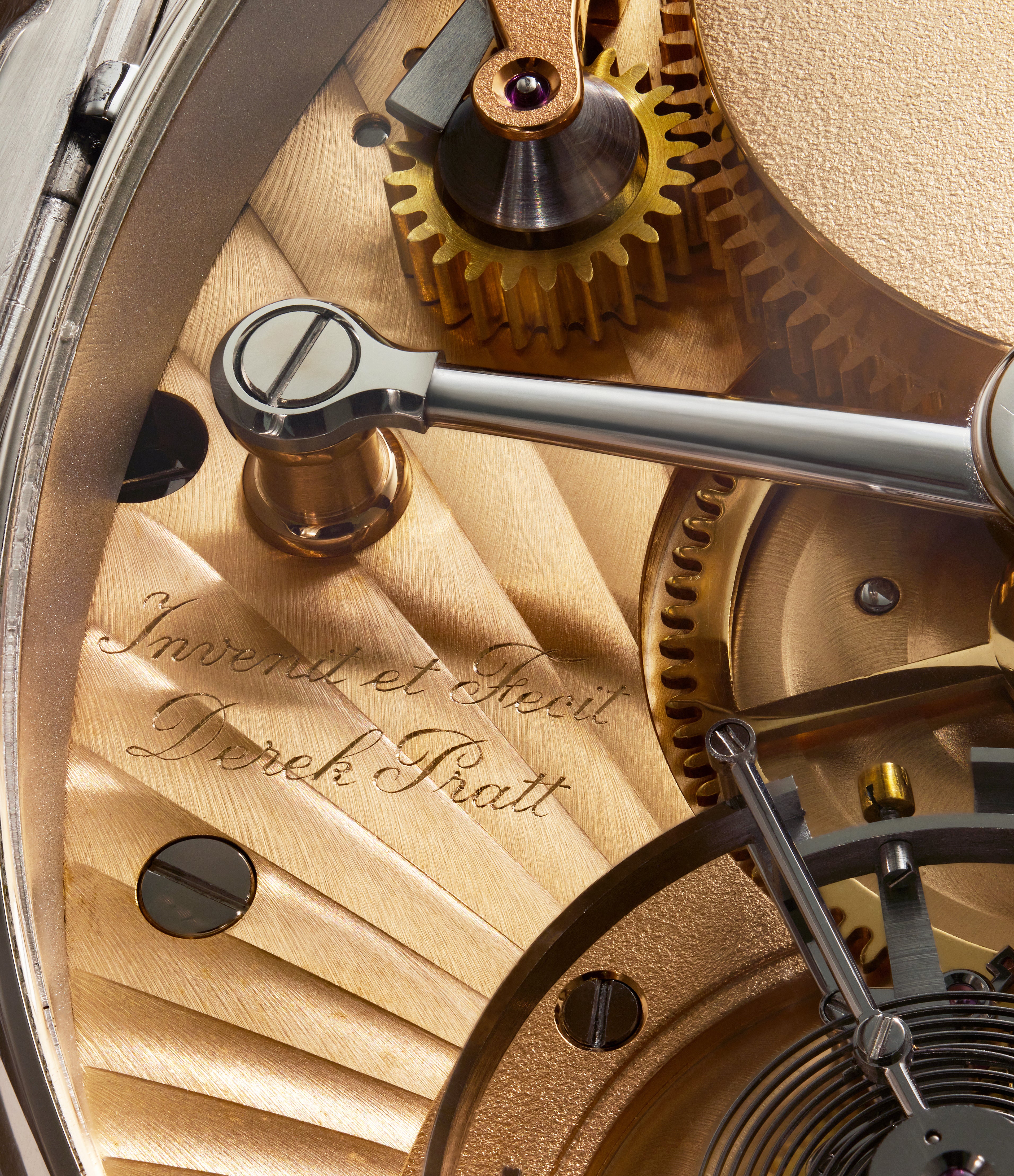

While it is one of a very small number of Urban Jürgensen watches that bear Pratt’s name, the Oval is undoubtedly the watch its maker will be remembered for.
The decoration on the movement side is perhaps the clearest indication that someone other than Pratt was involved. According to Voutilainen, Pratt never saw the finished watch. In fact, most of the consultation he had about the Oval was with Baumberger, not Pratt. Voutilainen adds, “Peter wanted to have straight Geneva stripes. But I said that it’s not a good idea because the main plate was quite long and not perfectly flat, either – it has a small curvature. I said it would be too challenging. I proposed that we should make it frosted, but Peter wasn’t very hot on that because he thought it old-fashioned. So instead I suggested we could have sunray stripes, which would be more practical, and we could make them nice. Peter accepted this.”
As with many things that excite strong emotion, not everyone is on board with the aesthetic decisions. Soprana says, “I think Derek was a bit disheartened about the case being re-done in different metals. For me, the finishing details such as the sun-ray striping and such, you can see from a kilometre away that it is not Derek’s style. On the dial underside they did this perlage, something Derek very rarely used.”
The market
The Oval remained in Crott’s personal collection until November 2024, when Phillips auctioned it for CHF 3.69 million. The set included the original silver case, as well as the additional platinum case.
Alexandre Ghotbi, who led the auction for the collection that included the Oval, says, “The Oval is the sort of piece that you enter this business for, to be able to spend time with the watch. It’s why you start loving watches – because pieces like the Oval exist. In terms of importance, it is an outlier. I had been asking Dr Crott for years if he would sell the watch and he always said it would be the last thing he ever sold. However, in 2024, when I asked him again, as part of my yearly joke with him, he seemed more amenable to the idea.”
While the Oval is clearly an outlier, he sees the result as part of the latest shift in collector sentiment. Ghotbi adds, “Had that watch come to market five years earlier, it would have attracted a price of maybe a CHF 1 million. It’s one of these iconic watches that everybody now knows and understands how important it is.
“I was looking at the history of the Urban Jürgensen watches by Pratt that we’ve sold and the first one we actually had was a pocket watch based on a Louis-Elysée Piguet ébauche [No. 3016 with the movement bearing the number 15131]. The watch sold for CHF 62,500 in 2017. However, subsequent sales, even before COVID-19 [pandemic], started going higher and higher. I think collector tastes were already starting to change. They were looking for more individual expressions of high-end watchmaking – handmade, pure, traditional. Consequently, we saw the prices of Pratt's pocket watches going up.”
In the same year, No. 3010 fetched a price of CHF 56,250. Watch No. 3001 (with no branding on the dial, as we discussed earlier) went for as little as CHF 11,875 in 2016, while No. 3001 fetched just CHF 25,000 the following year. Also in 2017, watch No. 3014 went for CHF 70,000.
"Today we have a new generation – they can be both very young or older, but they have entered the market in the past seven to eight years and approach collecting from a personal love of watchmaking... Their preferences can range from wearing a Nautilus to buying a Derek Pratt pocket watch."
- Alexandre Ghotbi
However, just five years later, in 2022, watch No. 3013 went for CHF 239,000. Another example – No. 3021, based on a Louis-Elysée Piguet minute repeater ébauche with perpetual calendar, moonphase and minute-repeating complications by Pratt – sold in 2023 for CHF 165,000. This was significantly more than No. 3016, which also has a split-seconds chronograph complication.
The results between 2016 and the present day appear to indicate towards a trend that is steadily accelerating. As such it cannot be attributed to any one event, be it the Covid-19 pandemic or the proliferation of cryptocurrencies. Ghotbi thinks that this is down to something a bit more enduring – tastes coming to and coalescing around genuine interest in finely crafted pieces.
Ghotbi says, “I think the Pratt-era pocket watches were mainly bought by Baumberger himself, who was an antique watch and clock collector. These were crafted at a time when the culture was shifting towards wristwatches, so this was more like a passion project for some of the old timers – the Cecil Cluttons of the world – who were still interested in pocket watches. It was more of an intellectual endeavour than a commercial one.”
Even in the late 2010s, other than pocket watches with grand complications from houses such as Patek Philippe and Breguet didn’t attract much attention, Ghotbi says. “I think the collectors then who were buying these are definitely not the ones who are buying them today. Today we have a new generation – they can be both very young or older, but they have entered the market in the past seven to eight years and approach collecting from a personal love of watchmaking. Their approach isn’t just to have a Patek, a Rolex, a Royal Oak or whatever. Their tastes are more individual. Their preferences can range from wearing a Nautilus to buying a Derek Pratt pocket watch. These pocket watches are speaking to this new type of clientele,” he adds.
Where connoisseurs such as Baumberger and Pratt viewed pocket watches as the pinnacle of watchmaking craft, Ghotbi says the watches that emerged from their vision and era still represent significant value. He says, “You can get these pocket watches – the Oval aside – with a tourbillon with a remontoire system at CHF 100,000 or 120,000. An Urban Jürgensen pocket watch that is entirely handmade and a comparable wristwatch will cost you three to four times as much.”
Final thoughts
The emphasis on pocket watches in this era was perhaps driven by the personal conviction and tastes of Baumberger and Pratt, even though by most metrics the culture of collecting at the time was already coalescing around wristwatches. Urban Jürgensen & Sønner bridged the gap between traditional craft and the then nascent category of the industry we have come to know as independent watchmaking.
Some were rooted in 19th-century vintage calibres, while others had their basis in a philosophy from that era while trying to find a place for that level of craft in the modern era.
Since the time Baumberger and Pratt started on this journey, preferences have waxed and waned only to seemingly come around again to the truth that the finest of watchmaking craft and innovation remains to be found in pocket watches. An increased appreciation on the market certainly seems to support such a hypothesis.
However, the duo also rightly recognised the preferences of the day, creating a series of wristwatches that issued from the same aesthetic preferences with some of the mechanical ingenuity that was Pratt’s hallmark. We will cover these in our subsequent and final instalment of the Collectors’ Guide to Urban Jürgensen.
We would like to take a moment to thank Dr Helmut Crott, Kari Voutilainen, Alex Rosenfield, Andrew Rosenfield, Alexandre Ghotbi, Luca Soprana, Mary Pratt, Juliet Haller, and Timothy Treffry for their time and insight.
Speak to one our specialists about your Urban Jürgensen here.




























































































